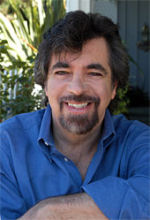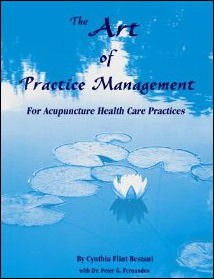Acupuncture & TCM Articles

Neil R. Gumenick is the founder and Director of The Institute of Classical Five-Element Acupuncture. Neil is a Worsley certified advanced teacher of Classical Five-Element Acupuncture and a practitioner with over 27 years of private practice experience. Neil holds three degrees from the College of Traditional Acupuncture (U.K.), and he participated for 10 years in the Master Apprentice Programô, led by Profs. J.R. & J.B. Worsley. Neil has taught at the USC and UCLA Schools of Medicine, the Worsley Institute of Classical Acupuncture, the Traditional Acupuncture Foundation, California Acupuncture College, Santa Barbara College of Oriental Medicine, and Pacific College of Oriental Medicine. He has been a Professor at Emperor's College of Traditional Oriental Medicine and SAMRA University of Oriental Medicine. Neil is co-author of The Art of Practice Management for Acupuncture Health Care Practices
Historical Leaders in Oriental Medicine
By Neil Gumenick, MAc (UK), LAc, Dipl. Ac
I was recently nominated for inclusion in the American Association of Acupuncture and Oriental Medicine (AAAOM) Historical Leaders in Oriental Medicine project. This project will commemorate the 25th anniversary of the organization and the historical progression of Oriental medicine in the United States.
What follows are my answers (excerpted) to a number of submitted questions - all impor-tant and relevant to our profession and part of the nomination process - printed with the kind permission of the AAAOM. Anyone wishing to nominate a teacher or leader in the Oriental medicine world for inclusion in the project may do so by contacting Karen Reynolds, LAc, at karen.a.reynolds@gmail.com .
Q: What led you to study acupuncture and Oriental medicine?

A: I was introduced to the Classical Five-Element Acupuncture theory at a seminar led by a friend and colleague, Leslie Shapero, MAc, LAc, at a tai chi chuan residential training in New England. I had not decided what my life's work was to be. I was so deeply touched by the simplicity and profound elegance of the system that I applied to professor Worsley's school in England almost immediately.
Q: What was your biggest challenge as you developed as a practitioner or educator?
A: Trusting my own senses; getting out of my head.
Q: Who inspired you in your training during AOM school?
A: Professor J.R. Worsley was my teacher and inspiration. Dr. Judy Becker Worsley was also a great inspiration and mentor. I also acknowledge, with gratitude, Oscar Ichazo and the Arica Institute, without which I would never have been sufficiently open-minded to even consider acupuncture as a career. I also acknowledge my dear friend and tai chi master, the late professor Patrick Watson, as well as my wife Cecile, who never expected me to suddenly announce (after coming home from the aforementioned tai chi training) that I was intending to go to England to study acupuncture. Her whole-hearted support has been an inspiration to this day.
Q: What keeps you inspired in your practice or tutorial/academic life now?
A: I am as much in awe (in my 27th year of practice) of what this system of medicine can do as I was when I started. My patients inspire me. Watching them recover their bodies, minds and spirits is a constant source of inspiration. Teaching other practitioners, to practice this style of medicine - seeing their lives transform as they grow personally, as well as professionally is also endlessly inspiring. Practicing and teaching is also a continual growth process for me. I see my practice and teaching as a significant part of my spiritual path, providing endless opportunities to work on myself. Additionally, I have had the honor to be the Classical Five-Element Acupuncture columnist for Acupuncture Today since 2001, which provides an ongoing forum to reach practitioners internationally.
Q: Do you have any advice for today's practitioners/educators?
A: Don't dabble. Find a style of practice or a lineage that touches your heart and truly inspires you. Give yourself to it totally and learn it deeply. Realize, too, that no system of medicine can cure everyone and that all systems have value. There is not the time, nor the need, in one lifetime to truly learn them all. Instead, become the best practitioner you can possibly become at the system you love. When you find yourself with a patient who you cannot help, or cannot help as much as you would hope, have the humility to ask others within your tradition for help. Or refer the patient to a practitioner who is as dedicated to the system he or she practices as you are to yours.
Q: In your previous position(s) of leadership, what do you identify as your most significant contribution?
A: In the late 1990s, I had the dream of creating a school where licensed acupuncturists and physicians could truly learn to practice Classical Five-Element Acupuncture in a one-year, part-time program that would allow them to continue in their own practices while studying. Starting from nothing but this vision, I persevered and created the Institute of Classical Five-Element Acupuncture. It has grown significantly every year, providing a "home" for those who wish to learn this system of body/mind/spirit medicine, as well as those who wish to pursue education and advanced studies.
Q: In your previous position(s) of leadership, what was the greatest challenge you faced, and how did you overcome this challenge? If applicable, is this challenge still faced within our community today?
A: The greatest challenge was self-doubt. Could I really start a school from scratch? Would students come? Would they be inspired and committed? Would they like me? Could I develop and lead a program - teach the theoretical and clinical components, handle the myriad of situations that arise with students, develop and supervise a faculty, do justice to the lineage that Professor Worsley taught to me? I overcame these challenges (and more) by focusing on the mission: to train a new generation of students to care for the bodies, minds and spirits of patients. In so doing, I removed the focus from myself and placed it where it belonged: on the welfare of the students and the patients. Getting myself out of the equation and choosing instead to serve others left me little time to marinate in self-doubt. I do not claim to have done it perfectly. Many times in a given day, I have had to change my focus, stop making it about me (trying to do it right, to look good, not to make mistakes, to play it safe), and get into action in serving a much higher purpose.
While I cannot speak for anyone else, I perceive that the challenge of self-doubt is still faced in our larger community. Self-doubt can cause practitioners to withdraw themselves or become unquestioning followers of one person, organization or set of beliefs. This, of course, demonizes everyone who is of a different persuasion and makes for disunity, rivalry, fear, arrogance, prejudice, and even hatred among various groups within the Oriental medical community. It also extends into relationships with the Western medical community. Practitioners become intent on proving themselves "right" and protecting their "turf," rather than sharing their knowledge, respectfully listening to and learning from each other, humbly admitting mistakes and taking corrective actions for the ultimate welfare of patients. A positive aspect of self-doubt includes questioning our own motives, beliefs, assumptions and conclusions, considering that we may not have all the answers. It keeps us vigilant, open-minded and spiritually awake.
Doubt can cause practitioners to isolate, distrust or be easily swayed by others, devalue their own unique gifts and talents, withhold honest expressions and offer opinions freely, not take bold action when called for, not participate in organizations that would further the cause of Oriental medicine, or tragically abandon this medicine that holds such promise for so many sick patients.
Q: If you had to select one area of focus that represents a "key" to the future of OM, what would that be and why?
A: Focus on the well-being of the patients. Do not be afraid to refer out or ask for help. Doing so does not diminish our standing in the eyes of patients. On the contrary, our standing is enhanced, for we have placed the well-being of the patient first and the patient cannot help but feel gratitude.
Q: We are now, more than ever, sought after as a profession, compared to Western medicine. What are the significant factors that you have seen causing this shift and why?
A: Western medicine, in the hands of skilled and caring practitioners, is a most valuable and necessary system of medicine, alleviating pain and dysfunction and saving millions of lives. Its orientation, however, is largely symptom-based. In many cases, it successfully removes symptoms, but it does not often address the underlying energetic causes of those symptoms. Without understanding and treating the causes (be they physical, mental, emotional or spiritual), the symptoms will reappear or new ones will emerge, stemming from the same unresolved causes. Even with the symptoms (expressions of the underlying imbalance) removed, the quality of life is often unchanged or diminished.
As I have said earlier, no system of medicine is a panacea, and all patients want and deserve to feel better. Used in conjunction with appropriate Western medical treatment, we can substantially assist with recovery time and the enhancement of life at all levels. The strength of Oriental medicine is that it does have the ability to balance a patient's energy before symptoms manifest, thus preventing much disease, as well as restoring the balance of energy after disease manifests, helping nature to cure, rather than suppress disease. We also have the means to effect change at the emotional, mental and spirit levels, which are often the source of the trouble, regardless of the label of the disease.
For these reasons and more, including the testimony of patients spread via an ever-expanding medium, such as the Internet, where patients can access wide and uncensored health care information and options and make informed decisions, our medicine has grown and will continue to grow. May we all be worthy of the trust patients place in us when they place their lives in our hands.
 
The Art of Practice Management for Acupuncture Health Care Practices
What you will find in this book is a specific, comprehensive approach that gets to the root cause of success in practice.
This new book presents acupuncture practice as art from the standpoint of centering, qi, and wholeness. It builds on the premise that practices succeed from bridging inner and outer aspects of the self. It is an inquiry into the self and addresses clear understandings and approaches to reputable patient care and practice qi. It brings in the five elements and work with the seasons of practice from training and start-up to growth, stability, expansion and transformation. The authors artfully bridges the essence of both patient and practitioner well-being without excluding the practicalities of financial well-being. This book very specifically and extensively shows how the different parts of practice nourish and feed one another and are interdependent on one another for the qi to flow synchronistically.
It explores the dual nature of procedures that work and those which do not in acupuncture health care practice, returning again and again to the delicate balance of practicality and spirituality.
|
